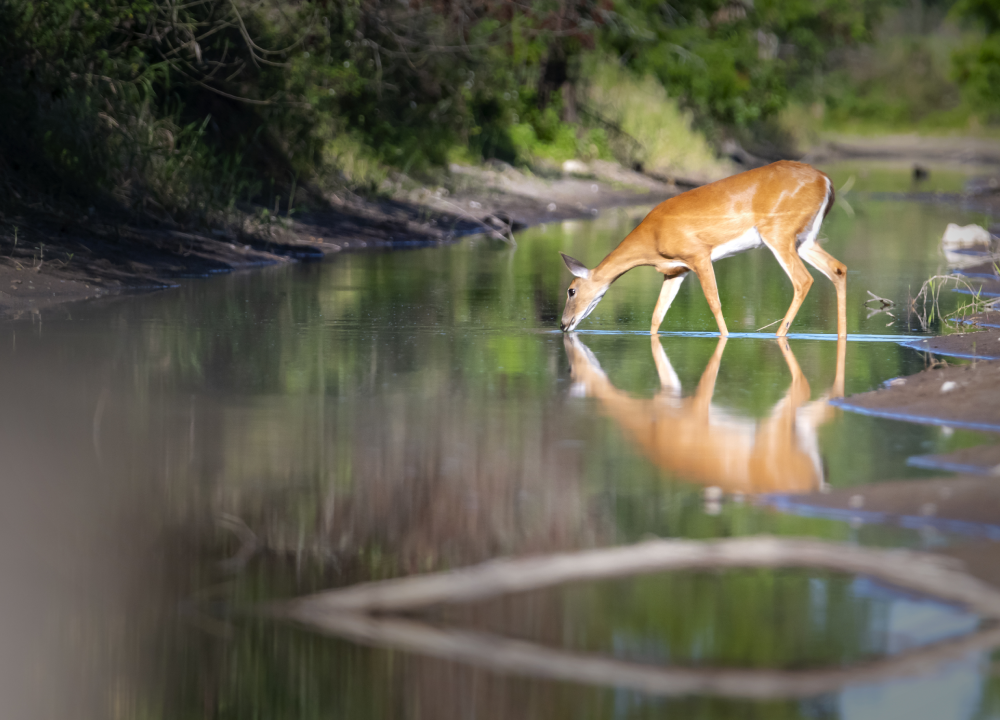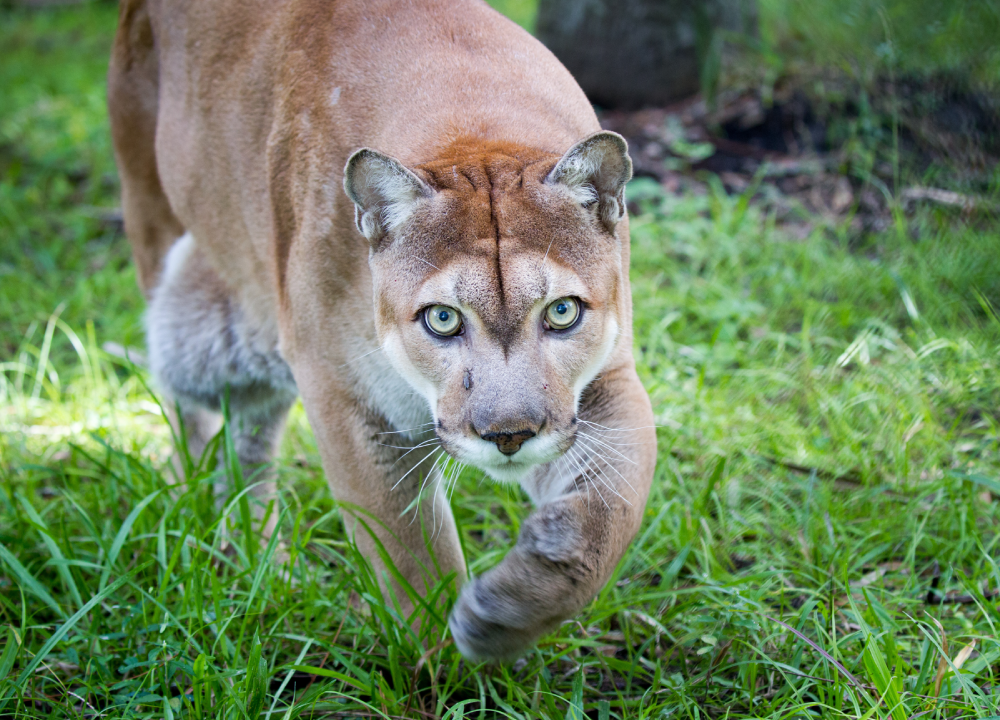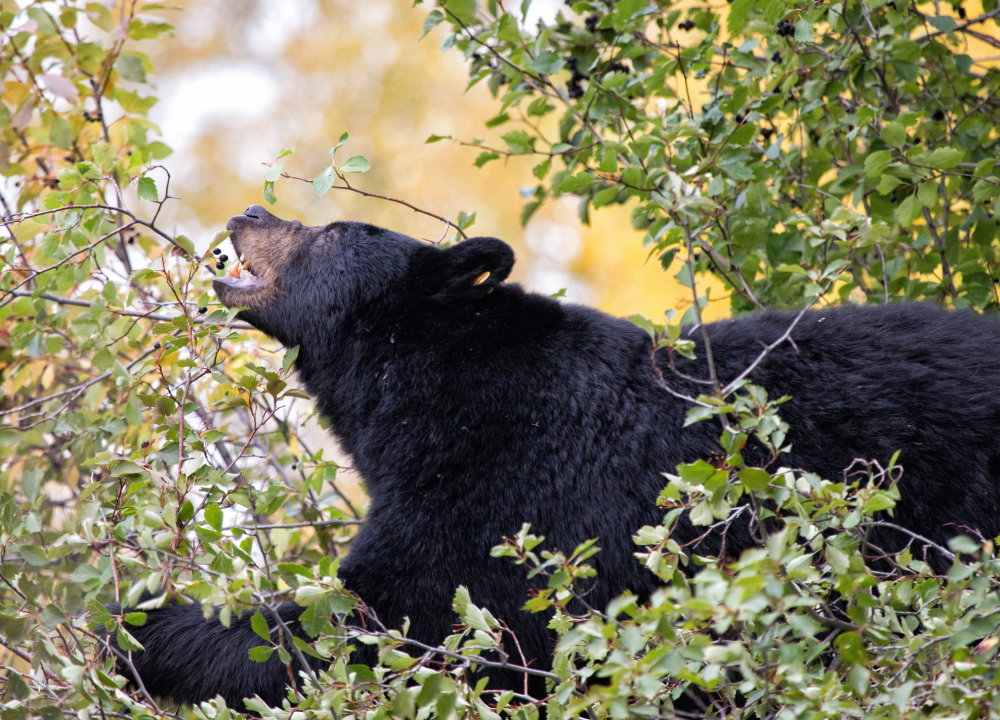State Animals of the Southern United States
Sabrina Colonna
So far, we've explored the state animals from the Northeast to the Midwest. Now it's time to travel towards the border and dive into the Southern states! The South is the most racially diverse area in the United States. The warm climate and long growing season yield incredibly profitable crops such as tobacco, rice, sugarcane, and cotton. The 17th to 18th century European settlers saw this incredible opportunity to raise and export crops, but lacked the skilled labor and discipline to grow them. This resulted in the rise of plantation slavery, which above all else distinguished a separation between the South and all other regions of the U.S. After the American Revolution, the North developed a strong condemnation of slavery, pushing for the freedom of enslaved Black people and ultimately leading into the Civil War. The South turned impoverished after their loss in the Civil War, and it wasn't until the introduction of The New Deal that they saw improvement in productivity and diversification in their agriculture. Throughout the entirety of its tumultuous history, the South has contained a unique variety of animals and wildlife, many of which were denoted state animals.
Check out the state animals in the Northeast!
Check out the state animals in the Midwest!
Check out the state animals in the West!
Delaware — Grey Fox
 Photo: Adobe Stock/PhotoSpirit
Photo: Adobe Stock/PhotoSpirit
Although Delaware had designated a state fish, bird, and marine mammal, they did not choose their state animal until June of 2010. The grey fox is indigenous to Delaware, and is believed to date back between 7 and 10 million years! This primitive species is able to run up to 28 miles per hour and is the only canine capable of climbing trees. Fourth grade students at Joseph M. McVey Elementary School chose the grey fox as part of their persuasive writing lesson. The students explained that, since the grey fox does not hibernate, it is "always ready, like our soldiers at Dove Air Force Base."
Maryland — Calico Cat
 Photo: Adobe Stock/Mateusz
Photo: Adobe Stock/Mateusz
Maryland does not have one specific state animal, but several! They have designated a state reptile, fish, horse, crustacean, and even a state dinosaur. Maryland selected calico cats as their state cat in 2001. Despite what others may assume, calico is not a breed of cat but actually refers to a very unique coloring of cat that can be found across breeds. The combination of orange, black and white coloring is also reflected in the Calvert family (Lords of Baltimore) coat of arms, which is present on Maryland's state flag and coat of arms.
Washington, D.C. — Wood Thrush
 Photo: Adobe Stock/nataba
Photo: Adobe Stock/nataba
Although Washington, D.C. isn't technically a state, the District has designated many state animals, including a state bird! The Wood Thrush is native to the area, and can be spotted by its red-brown feathers and dots on its chest. This bird is particularly interesting because its eggshells are made mostly of calcium carbonate. However, since birds don't drink or produce milk, they hunt for other ways to obtain that calcium. A Wood Thrush will need 10 to 15 times the amount of calcium that a small mammal would need to nurture its young. So, these birds end up eating a lot of snail shells, which is a surprisingly good source of calcium!
West Virginia — Black Bear
 Photo: Adobe Stock/geoffkuchera
Photo: Adobe Stock/geoffkuchera
Also the state animal of our neighbor in the Midwest, Minnesota, the black bear has returned as West Virginia's designated animal symbol. Between 1945 and 1955, the Division of Natural Resources conducted a poll to help choose the state animal. Students, teachers, and sportsmen alike participated in the poll, ultimately selecting the black bear. America's smallest bear species, and the most common bear species in the world, the black bear can be found in 36 of our 50 states, as well as in Canada. However, its preferred West Virginia habitat is in the eastern mountain region. They can grow up to 6 feet long and weight around 300 pounds, yet are still apt climbers and swimmers.
Virginia — American Foxhound
 Photo: Adobe Stock/Mary Swift
Photo: Adobe Stock/Mary Swift
Similarly to Maryland, Virginia has many state animals, including their state dog - the American Foxhound. These foxhounds were bred during colonial times for one main purpose, hunting foxes. They are now known for their sweet, loyal disposition, and need plenty of exercise and entertainment or they may turn destructive at home. These kind pups love to socialize with other dogs and are considered to be particularly trainable pets.
Kentucky — Cardinal
 Photo: Pixabay/tlparadis
Photo: Pixabay/tlparadis
Kentucky designated the cardinal as its state bird in 1926, chosen because it is native to the state. This lucky bird is the official bird of six other states, including Indiana. Cardinals are not only known for their distinct coloring, but for their catchy songs as well, which can be heard nearly year-round. Male cardinals are the classic, scarlet red color that we typically associate with cardinals, whereas the females are a buffy brown with reddish wings. Both birds have a black mask with a heavy bill, and a striking crest on top of their heads.
North Carolina — Marbled Salamander
 Photo: Adobe Stock/Hamilton
Photo: Adobe Stock/Hamilton
So far we've seen state birds, cats, fish, and dogs. North Carolina will be the first state we look at that has denoted a state salamander! Due to the efforts of the N.C. Herpetological Society, the state made the marbled salamander the official state salamander in June of 2013. This salamander is a common, native species to the state. Utilizing its white and gray stripes as camouflage, this little critter typically hides out under leaves and logs. Adults typically only grow to about 4 inches long, with the males growing to be slightly smaller than the females. Marbled salamanders love damp woods that are close to pools and ponds, but can withstand dry habitats more than other salamanders by burrowing underground. Salamanders are actually nocturnal and, similarly to the mole, spend most of their time in tunnels and burrows underground.
South Carolina — White-Tailed Deer
 Photo: Adobe Stock/TJ
Photo: Adobe Stock/TJ
We've finally circled back to another designation of the white-tailed deer! Officially chosen in 1972, the white-tailed deer is proving to be an essential part of America's wildlife history. Though these deer prefer to inhabit young forests, old fields and croplands, the white-tailed deer can be found throughout South Carolina, from the coastal marshes to the mountain forests. Like most deer, only the males grow antlers. The male fawns will start to exhibit antler growth by the time they're two years old, as small knobs called "buttons" start to pop out from the tops of their heads. Adult bucks will shed their antlers each year in late December, with new growth starting immediately. These deer will have soft antlers in the summer, which are covered in what appears to be hair which is called "velvet." The antlers then harden by the fall and come late December the cycle starts over again.
Tennessee — Raccoon
 Photo: Adobe Stock/Илья Невзоров
Photo: Adobe Stock/Илья Невзоров
Tennessee is providing us with a unique change of pace with their odd state animal of choice — the raccoon! This critter was adopted as Tennessee's official wild animal in 1971. Often referred to as bandits, these furry animals have bushy, ringed tails and black markings around their eyes that give the appearance of wearing a robber's mask. They love to eat fish and frogs that they catch in rivers and streams, and are known to be very good swimmers.
Georgia — Northern Right Whale
 Photo: Adobe Stock/softfocusphoto
Photo: Adobe Stock/softfocusphoto
Like many of the other states we've examined so far, Georgia has designated multiple state animals over the years, including a state marine mammal. The northern right whale was selected in 1985 because Georgia's coastal waters are actually a calving area for these whales, making them only native to the state's waters! These endangered beauties have been threatened since whalers named it the "right whale" about 800 years ago. So named because they were the "right" whales to hunt since they are slow swimmers who stay close to the surface and shore, and their bodies float once killed due to their abundance of blubber, making it easier to reel in the kill. After whalers nearly hunted the species to extinction, the right whale remains critically endangered, with only about 350 of them left in the world. Though hunting these animals has been illegal for the past 100 years, other factors including collisions with ships, pollution, and fishing nets are keeping the whales' numbers from increasing, leading scientists to believe that these whales won't be able to escape extinction.
Florida — Florida Panther
 Photo: Adobe Stock/Jo
Photo: Adobe Stock/Jo
Another endangered state animal is the Florida panther. Designated in 1982 by a vote of school children, the Florida panther has been protected from legal hunting since 1958. However, work is continuously being done to maintain and preserve the panther's natural habitats to keep them from extinction. This pale brown cat can grow to at least six feet long
and shares its habitat with the acclaimed white-tailed deer, which is the mainstay of the panther's diet. These cats are seldom-seen and often misunderstood, being persecuted and feared due to their role as a large predator. The expansion of human development into the Florida panther's habitats is what poses the biggest threat to the animal's continued existence.
Alabama — Black Bear
 Photo: Adobe Stock/Jason
Photo: Adobe Stock/Jason
Alabama did not choose their state animal until 2006, but happily settled on the black bear. These bears have black bodies with brown muzzles, and occasionally sport white marks on their chests. They can range anywhere between 120 and 350 pounds, with body lengths from 3 to 6 feet. Though these animals are classified as carnivores, they are actually pretty poor predators, choosing to primarily eat plants and twigs and only eating vertebrate animals when an easy opportunity is presented. Litter sizes can vary between 1 to 5 cubs, but twins are actually the most common offspring!
Mississippi — Red Fox
 Photo: Adobe Stock/Menno Schaefer
Photo: Adobe Stock/Menno Schaefer
Red foxes are wonderful omnivores that are actually part of the canidae family. These cute critters play an essential role in balancing our environment and natural habitats, serving as primary participants in rodent and insect control. Though red foxes eat small mammals, birds, and insects, they also enjoy a variety of plants and other vegetation, including grass, nuts and seeds, berries, pears, apples, corn, and much more! They typically travel family-style, with their social groups comprising of a male, a female, and their pups. These clever creatures can forage for up to 6 hours a day, traveling an average of 6-9 miles each night.
Arkansas — White-Tailed Deer
 Photo: Adobe Stock/Tony Campbell
Photo: Adobe Stock/Tony Campbell
In March of 1993, Arkansas joined the likes of Ohio, Pennsylvania, New Hampshire, and seven other states in designating the distinguished white-tailed deer as their official state animal. Though the deer once thrived in Arkansas, like in many other states, the introduction of European settlers resulted in a steep decline in the deer population. Though the Arkansas Game and Fish Commission (AGFC) established deer refuges in the 1920s, it was not enough to keep up with Arkansan hunters. By the mid-1930s, the AGFC resigned themselves to buying white-tailed deer from their neighboring states, relocating them throughout Arkansas to improve the species reproduction and general distribution. This proved to be a success since, as of 2008, Arkansas is home to about 1 million white-tailed deer!
Louisiana — Catahoula Leopard Dog
 Photo: Adobe Stock/otsphoto
Photo: Adobe Stock/otsphoto
Louisiana has gone above and beyond with their designations, not only selecting a variety of state animals, but also a state boat, state cuisine, state cultural poem, and even a state drink! Part of this collection of state designations is the Louisiana state dog - the Catahoula leopard dog. This unique breed was originally bred to find livestock in any terrain, from swamps to canyons to forests and even mountains. Considered to be the most aggressive of the cattle dogs, these dogs can herd wild cattle and hogs easily. Catahoula leopard dogs are very agile, athletic and protective, and typically need acres of land to run out their energy.
Oklahoma — American Buffalo
 Photo: Adobe Stock/Christine
Photo: Adobe Stock/Christine
Joining the ranks of Kansas and Wyoming, Oklahoma designated the American buffalo as their state animal in 1972. The buffalo has played an essential role in American history, with some arguing that the no other wild animal has had as significant of an impact on human life as the buffalo. Native communities in the Great Plains relied on the local buffalo for food, shelter, and clothing, while also viewing the animal as a powerful spiritual symbol. One of the largest herds of American buffalo can be found in the protected Tallgrass Prairie Preserve in Pawhuska, Oklahoma.
Texas — Texas Longhorn
 Photo: Adobe Stock/Lindsay Helms
Photo: Adobe Stock/Lindsay Helms
Rounding out our list of state animals in the south, we have the Texas longhorn. A hybrid of English and Spanish cattle, the Texas longhorn is known, unsurprisingly, for its extremely long horns, as well as its solid hooves and general strength. Although the longhorns were a symbol of Texas cattle drives, once the open range ended, they were nearly bred out of existence. Thankfully, breeders saved the animal in the 1920s, preserving the distinctive breed for Texas state parks. Eventually, ranchers rediscovered how useful the hardy Texas longhorn can be, and they have since become a mainstay of Texas ranches.
To learn more about the incredible creatures that roam the U.S., check out the state animals of the Northeastern, Midwestern, and Western states!

